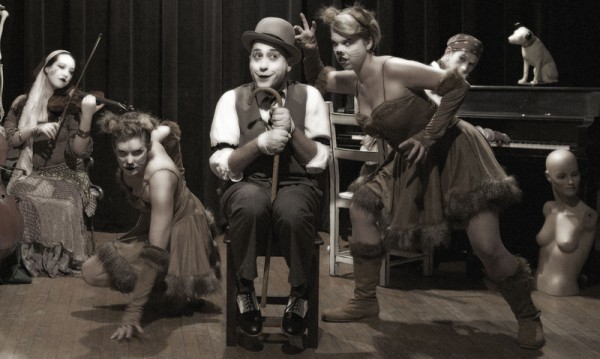 I was hooked on Candy Town the first time I saw them. They put on a review. There were costumes and make up and ragtime and a hint of malice. Ringleader Sean Guinan conducted an e-mail interview for Steampunk Chicago.
I was hooked on Candy Town the first time I saw them. They put on a review. There were costumes and make up and ragtime and a hint of malice. Ringleader Sean Guinan conducted an e-mail interview for Steampunk Chicago.
1. I’ve described the Candy Town stage show as a Max Fleischer cartoon come to life. Could you elaborate on Candy Town’s origins and aesthetic?
What a lovely description! And appropriate, in terms of Candy Town’s genesis, since I took the name from the title of an early 1930s “Aesop’s Fables” animated cartoon…a musical, Fleischer-esque short about a couple of anthropomorphic cats who climb up to the moon and discover that it’s a kingdom made of cake, candy and ice cream.
When I first saw that cartoon, I was beginning to develop a personal mythology in the music and videos I was making. Because I grew up with a lot of early 20th-century pop culture (my father had little interest in more recent entertainment), I knew my aesthetic vocabulary would include those influences…the makeup and costumes of vaudeville and silent films, the musical leanings of ragtime and WWI songs…but I also knew I wasn’t interested in simply mimicking that culture. I wanted to reap the benefits of historical distance from that time, and I wanted the metaphors in my work to be personal, concerning my own philosophical pursuits…which have largely to do with the chasm between everyday reality and the moon we want to climb up to. The characters in my movies often struggle to find their way back to some idyllic, impossible, storybook realm they vaguely remember as being their home, once upon a time…and so I depict those realms with the trappings of the 1920s films I love: clown faces, scratchy images, bowler hats and flapper costumes…beguiling and misleading phantoms from a far-off time. In putting together the band, I knew I’d want to incorporate those same elements, adding other archetypes of dangerous allure…gypsies, schoolgirls, cat-women, burlesque vampires. The musicians of Candy Town are meant to be roving carnies from the land for which their group is named, traveling the countryside and enchanting their audiences…either to offer them a better life, or to bamboozle them out of their money and children.
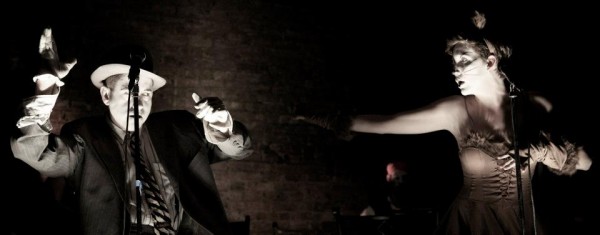 2. The show is very theatrical, almost tailor made for video. What would the difference be between the show and an album?
2. The show is very theatrical, almost tailor made for video. What would the difference be between the show and an album?
My intention is to cultivate Candy Town as an art movement in various mediums…I see the band as a springboard to incarnations of film, television, recorded music, experimental theatre and visual art tomes. As such, I’ve never viewed what would ordinarily be considered a band’s “marketing materials” as a supplementary experience with our group…rather, I think that every video, show poster, or photo essay should be it’s own tasty, self-sufficient presentation which reflects the dark and comical romance at the heart of the act. So when we do finally get into the recording studio, we won’t simply be making a document of the music we play onstage…we’ll be translating the material into something unique to the medium of audio recording, with plenty of overdubs, sound bites and audio trickery.
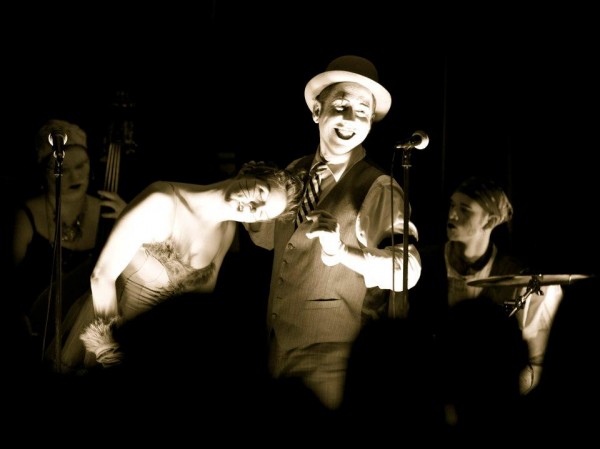 3. How do you develop the musicians’ onstage personas?
3. How do you develop the musicians’ onstage personas?
It’s a mix of what kind of stock characters are needed for a given show, and who the musicians are that I cast. For last year’s show, I wanted a creepy, sexy, Weimar Republic tone, so the men wore bowler hats and the women showed skin. This year’s show requires more of a traveling gypsy palette, so the musicians are dressed accordingly…with the exception of the cat-girls, who are part of the tale the gypsies are telling.
But there’s also development over time with the individual characters, and that has everything to do with who I cast. In taking on musicians, my foremost priorities are to take good players who work well with others. But if they should also be theatrically inclined, I like to re-finagle the show a bit to throw some focus their way. Last year, the musicians on the whole didn’t want to ham around so much at first…but they got more comfortable with it as we went along, and our guitarist in particular was a very funny guy that I loved to banter with in rehearsals…so I asked if he’d be interested in doing that with me onstage. He liked the idea, and in every show from then on, we did a quick little vaudeville spot together called “Lunchtime with Noodles”. I try generally to veer the musicians’ onstage personas toward exaggerations of their own real-life personalities.
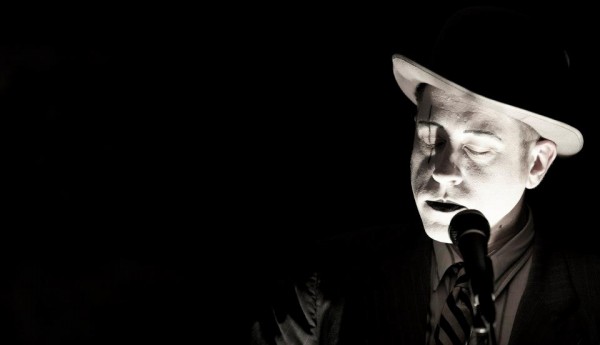 4. Who is Dobbs and what is his role in Candy Town?
4. Who is Dobbs and what is his role in Candy Town?
In the early 1990s I started doing a sketch-comedy show on cable access TV called “Possibly Blank”. The more I worked on it, the more it veered toward surrealism and that dream/reality theme I mentioned, incorporating 1920s-sounding musical numbers. For those black-and-white sequences, I wore a suit and bowler hat, painting my face like a silent film clown. The character I created borrowed a little from Chaplin and a little from Joel Grey’s Emcee…he presents himself as a ragged poet with a broken heart, then laughs at you for foolishly believing that about a devil like him, then reveals later that his laughter was only to hide his own vulnerability, then laughs at you again later for buying that too, and so on.
In “Candy Town”, the hour-long video I produced (intended as the pilot to a cable access series) after seeing the 1930s cartoon of the same name, my devil clown sang his songs from a faraway place, smilingly taunting the doleful young protagonist who has fallen in love with a girl at school. This was demonstrative of my character’s function in the universe…he gleefully introduces what is beautiful, knowing full well that it also delivers a poisonous bite.
In 1997 I went to work on a movie dealing with a recent brush with death I’d had, as well as my feelings about the 20th century wrapping up. Despite those heavy themes, it was loaded with light-hearted musical numbers…and because I wanted to keep my tongue somewhat in my cheek, I named my character “His Nibs”…a 19th/early 20th century slang term for someone who takes himself too seriously, too loftily. Somehow during the writing of the music, “Nibs” became “Nobbs”, which became “Dobbs”. But the mutation seemed appropriate, as I was trying to codify my own “man in the bowler hat” (what, exactly, is the iconic power of that one article of dress which lent such effectiveness to Chaplin, Laurel & Hardy, Mackie Messer, Fats Waller, Magritte’s mannequins and Beckett’s tramps?), and “Dobbs” is the name of a well-known New York hat manufacturer which got it’s start in the 1930s. So I called the movie “The Private Pennies of His Merry Dobbs”…the musical material from it constitutes the show that the band is playing now.
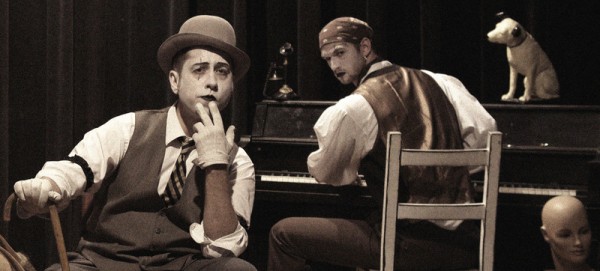 5. Given an unlimited budget… well, limited but financially obscene… what would the stage show look like?
5. Given an unlimited budget… well, limited but financially obscene… what would the stage show look like?
Oh, that’s an enticing fantasy. I’d want it to look like a children’s storybook from 1910, in enormous proportions. A two-dimensional city skyline, a huge man-in-the-moon, cardboard and canvas clouds floating past. Faux cobblestone streets, faux railroad track, little motor cars. Friendly bakers, Irish traffic cops, talking animals. All of it real props and set pieces , no digital projections…and all of it things we vaguely remember about life on earth, even though we’re much too young to remember them.
You can find more Candy Town treats at their Reverbnation page.
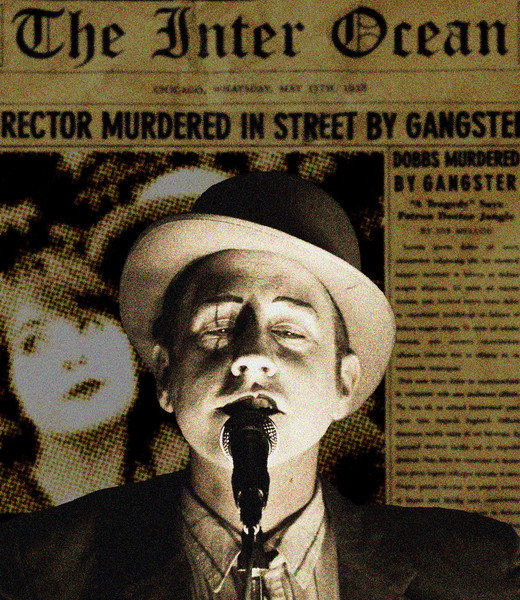

There are no voices yet... Post-script us a message below, won't you?